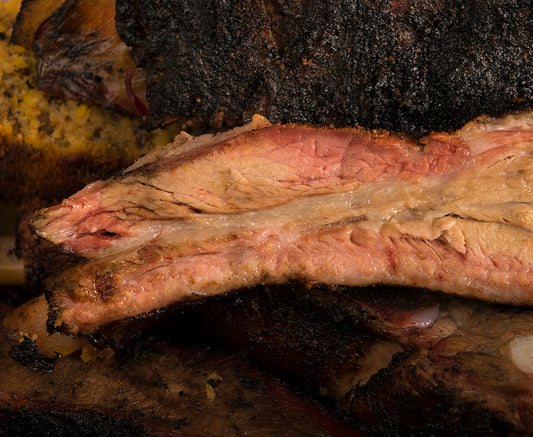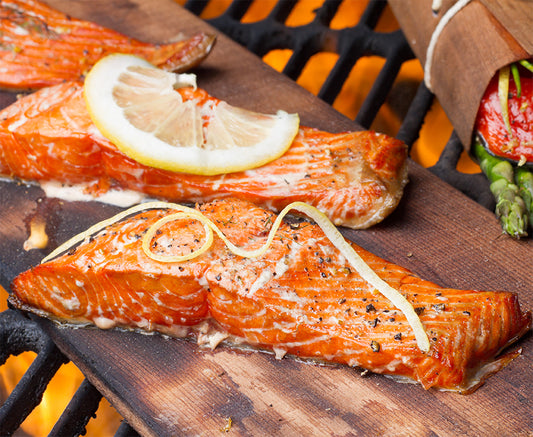There’s often nothing better than heading out into your backyard and smoking some delicious chicken. Whether it’s a relaxed evening with friends or family or you’re simply craving some smoked chicken, you can never go wrong. However, one of the common problems people often run into while smoking their chicken is that the skin becomes rubbery.
Rubbery chicken skin is not fun for anyone and can lead your evening down a different path than what you might have imagined. So, to prevent this, let’s go over some pointers that will prove helpful the next time you head out to smoke some chicken. Here are some ways you can prevent your smoked chicken skin from becoming rubbery:
The fridge trick
One of the not as known but effective ways of having a crisp chicken skin is allowing it to dry on the fridge before cooking, place it on your racks and allow it to site there for about an hour before smoking. This one was tested several times, let us know how you test goes.
Cook at Higher Temperatures
First and foremost, smoke your chicken at higher temperatures. The ideal temperature to cook your chicken should be around 275 °F – 320 °F (135 °C – 160 °C). As you start to decrease temperature beyond this threshold, the skin will become rubbery. The chicken fat needs to be cooked into the meat, and that cannot happen when your temperature is very low.
With this technique you’ll cook chicken quicker, so less time for it to absorb smoke flavor, so you could smoke it in lower temperature for about an hour and get things warmer for the last hour of cooking.

Don’t Foil The Chicken
This point may come as a surprise to many. Simply put, aluminum foil wrapping will create an enclosed environment and trap moisture. The moisture then leads to the chicken going soft and the skin becoming rubbery. While wrapping other meats such as beef in aluminum foil can work out well, this is not the case with chicken or any other poultry. So, next time, keep in mind that foil will not be of many benefits when it comes to wrapping chicken.
Don’t Soak Chicken in a Brine
Instead of wet brining your chicken, try to go with dry brining. The soaking chicken in brine leads to the meat being wet and soggy. This then leads to the chicken skin being soft and not crispy, which can also make the skin rubbery. Alternatively, try dry brining. Applying salt the day before will enhance the chicken’s flavor. Along with that, it also helps stop the chicken from drying out completely or the skin turning rubbery.
Check out our entire catalog of articles on brining and curing your meat here:
What’s the Difference Between Pickling, Brining, Marinating, and Curing?
Curing and Smoking Meats for Home Food Preservation
Directions On Brining And Curing Your Meat For Food Smoking
Don’t Use a Pan
Another unexpected pointer for many is that when the chicken is cooked in a pan, it tends to cook inside its own juices and leave the bottom very dry and rubbery. To prevent this, use a cooking grate that will allow the air to flow and, therefore, not lead the chicken to become dry, or worse, give it rubbery skin. Water pans are also common when it comes to smoking chicken and should not be used either.
As the chicken cooks, the water tends to absorb the heat and, therefore, adds moisture to the cooking chamber. The moisture, as discussed before, then leads to soft chicken with rubbery skin. Water pans can be used preferably for briskets and not when it comes to chicken.

Spatchcock the Chicken
Spatchcocking the chicken is yet another brilliant way of avoiding the trap of rubbery skin. After spatchcocking, all the individual parts of the chicken are laid on a flat surface. From then on, the only important part is to be mindful of the time. Otherwise, it’s all good.
Check out this article: How to Butterfly and Spatchcock a Chicken
Rest the Chicken
Lastly, this might be one of the most important factors in this list. It’s crucial to let the bird rest for at least 10 minutes before you carve it. This is because right out of the smoker, the chicken is still absorbing its many flavorful juices, and cutting into it at that moment will cause them to flow out and be wasted. It will also lead the chicken to be less juicy, resulting in a dry and rubbery eating experience. The internal cooking temperature of the chicken should be around 165 °F–175 °F (73 °C–79 °C).
Investing in a good leave-in thermometer and an instant-read thermometer can prove useful and long-lasting. Having one can also increase the temperature accuracy of the food you cook. As mentioned, smoking chicken is one of the ways of cooking it and enhances the punch of flavor with the addition of smokiness. These pointers can help you achieve perfect skin – not a rubbery one.
Many love to smoke some chicken on the weekend, while others make it an even more frequent activity. Smoking a chicken can be a part of your lifestyle, and if that’s the case, these tips will prove helpful. For more great ideas on how to get the most out of your Bradley Smoker, check out the awesome articles on our Bradley Smoker Food Smoking Blog for more tips & tricks.





